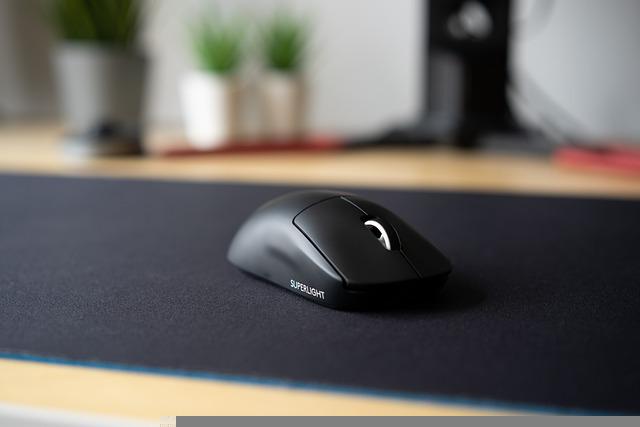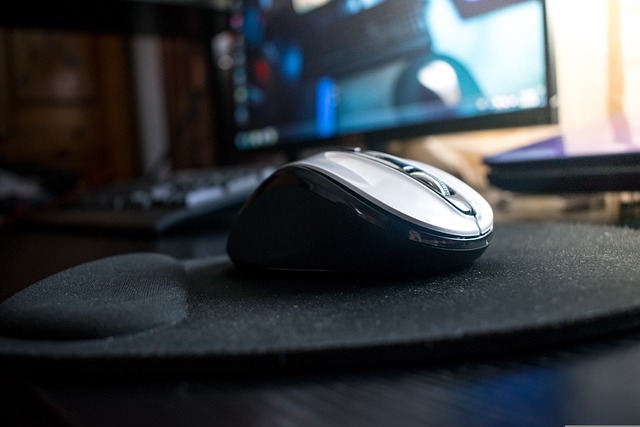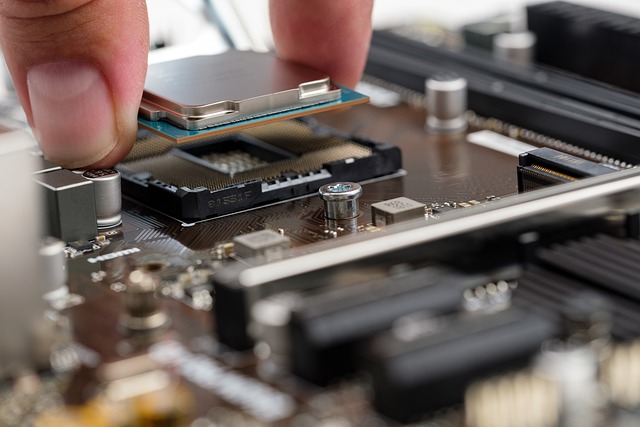
For anyone who uses a desktop computer, a mousepad is a necessary accessory. You might enjoy personalizing your mousepad. Making your own will allow you to customize the size and aesthetic to fit your desk space.
How are mouse pads made: Aluminum and rubber, both hard and soft, are placed on enormous rollers. The substance is weighed. The typical dimensions of square mouse pads are 7.5″ x 7.5″.” The desired shape for the mouse pad is produced using a die cutter. A rubber composite is usually installed at the bottom of mouse pads. A logo for a company or institution is digitally printed on top of the mouse pad. For quality control, the mouse pad is inspected. It is now possible to use the mouse pad.
Please read on.
Table of Contents
How Are Mouse Pads Made?
We’ll talk about the substance used to make mouse pads as our first topic. As you may already be aware, the mouse pad’s texture depends on the material used during production. Therefore, a high-quality material offers a much better texture as well as resistance to wear and tear.
As a result, the price range and anticipated lifespan of the aforementioned mouse pad are increased. The mouse pad needs to be attractive in addition to having a smooth surface and a durable construction since it is essentially a display accessory for your computer.
Because of this, a mouse pad can be made from a wide variety of materials. The materials are chosen based on the aforementioned criteria, and some undoubtedly have more benefits or drawbacks than others. Rubber, fabric, microfiber, and vynex are a few of the most frequently used materials for mouse pads.
However, there are also some high-end mousepads available that are made of wood or leather. These mouse pads are not the best option for everyday use because they are made for specific applications. But among these high-end mouse pads, you can undoubtedly find some options that are worthwhile to purchase as a set of accessories.
Types Of Mouse Pads
There are typically only 2 types of mouse pads that distinguish the various options offered on the market, in contrast to the categories based on the material used for the mousepad. Mouse pads can be divided into two categories: soft mouse pads and hard mouse pads. Due to the differences in material, production method, and lifespan, these two mouse pads differ greatly from one another.
If you want to find the ideal mouse pad for your application, be sure to review the key distinctions between soft and hard mouse pads that are listed here. Right now, you can read up on both varieties of mouse pads in detail and determine which is best for your application before making a purchase.
Soft Mouse Pads
The soft mouse pads, as their name implies, have a smooth, plush surface available on top that provides a cozy spot to rest your arm and wrist. The majority of comfortable mouse pads have pads that provide even more wrist comfort, making them appropriate for prolonged work sessions.
As you might have guessed, soft mouse pads are primarily useful for people who use the computer for business-related tasks. It is advised to use a soft mouse pad if you plan to spend a lot of time using your computer to prevent stress and fatigue on your hands. Soft mouse pads are lightweight, making them the perfect accessory for carrying with your laptop.
However, since they are meant to be portable, soft mouse pads are also very small. As a result, using a mouse with a low sensitivity on a soft mouse pad is not possible. Additionally, soft mouse pads are less reliable than their hard counterparts because their smoothness and padding degrade with use and over time.
Hard Mouse Pads
In complete contrast to what you have seen thus far with soft mouse pads is the hard mouse pad. While hard mouse pads are suitable for extended periods of work, they are more geared toward gamers and other users who use them. A hard mouse pad’s size is among the most significant justifications for choosing one. A mouse and a keyboard can both fit on some large hard mouse pads while still leaving plenty of room for the mouse to move around.
It is highly advantageous for a gaming mouse to use the hard mouse pads because they have a premium contact surface that produces low friction. It provides minimal resistance, allowing you to produce quick movements on the mouse pad. Some hard mouse pads also have RGB lights, which many users might find appealing.
For a hard mouse pad, the wrist rest poses some difficulties. You will need to purchase a sizable wrist rest from the market after comparing its size and compatibility if the brand does not include one with the mouse pad. Additionally, carrying hard mouse pads is challenging because you must store them rolled up in a box to prevent surface scratches and permanent deformation.
Exactly How Is A Mouse Pad Made?
The most common mouse pads are constructed from a mix of rubber, hard plastic, and/or soft fabric.
Prep The Material
On enormous rollers, sheets of soft or hard material are positioned. This makes it possible for the factory workers to access more material at once and produce a greater number of mouse pads more quickly.
Measure The Material
The mouse pad is measured to make sure it is the same width throughout. The most popular mouse pads are square and are typically about 7.5″ x 7.5″. The manufacturer will determine whether they are larger or smaller.
Cut The Material
Any shape you can think of can be made using die cutting, whether it’s a standard square or something more distinctive like a circle, heart, or paw print. Imagine a die cutting machine as a large cookie cutter that uses enormous rolls of fabric or plastic to cut out the desired shape.
Add Rubber To The Bottom
Typically, lower density rubber composites are bonded to the bottom of mouse pads. This is so because rubber is sturdy, elastic, and tear- and abrasion-resistant. When moving a mouse around on top, it also creates a non-slip base, which is crucial.
Print With A Design
The front of the mouse pad will then be embellished with a unique design. The most common methods for doing this are heat transfer and full-color printing, which transfers the design to the surface using lasers and inkjet printers. Before the material is even cut, the design for hard mouse pads may be printed in step one. Conversely, soft mouse pads are cut first, then the design is printed on them.
Check For Quality Control
The manufacturers check that everything is in working order at this point. They make sure the design is clear and precise and that the mouse pad is free of any loose threads.
The Mouse Pad Is Ready For Work
The mouse pad is now prepared for use. Custom mouse pads are available online from promotional products companies, or you can simply purchase one with a distinctive design from your preferred retailer.
A mouse pad is a relatively straightforward invention, but the design printed on the top gives it most of its value. It’s a fantastic way for businesses to promote their brand, whether they’re a tech startup holding a grand opening or a realtor looking for open house gifts!

Qualities Of A Good Mouse Pad
You’re considering purchasing a high-quality mouse pad for your computer setup, but what exactly falls under that category? These characteristics and features are a must for your mouse pads to meet your needs perfectly.
Ergonomic Structure
Making sure the mouse pad you purchase has an ergonomic design should be your top priority. You should evaluate the ergonomic structure based on a number of factors, including the proper thickness, softness, and comfort.
Decent Size
Actually, your needs will determine the ideal mouse pad size. A small mouse pad would be ideal if you have a small computer table, but if you have a larger setup, an extended or large mouse pad will work best for you.
Durable Material
The quality of the material is one of the most crucial aspects you’ll need to take into account when selecting a mouse pad. To avoid having to replace the mouse pad due to wear and tear in a few months, make sure the mouse pad you purchase has high-quality rubber inside and fabric covering the outside.
Visual Aesthetics
Visual appeal is a crucial factor to take into account as well. It’s possible that you don’t like patterns and designs on your mouse pad, but that’s not the point of this discussion. If you’re envisioning a more relaxed computer setup, classy and decent mouse pads could also be an option. Simply check to see that the aesthetics nicely complement your computer setup.
Is A Mouse Pad Required?
In the tech community, there has been much discussion about whether or not you actually need a mouse pad. The mouse pad provided a surface for the rollerball to grip in the early days of computers, making it crucial. Technically speaking, your mouse can work without a mouse pad.
That does not imply that the expense is not worthwhile. You should still use a mouse pad for a variety of reasons.
What Is The Lifespan Of A Mouse Pad?
It is challenging to recommend a specific average lifespan for all mouse pads currently on the market. This is due to the fact that a mouse pad’s lifespan is influenced by a wide range of factors, including how often you use it, its quality, its price range, and numerous external factors like the environment. Due to superior production standards and material quality, hard mouse pads typically last a lot longer than soft ones.
In any case, you can anticipate a lifespan that is equal to the length of the manufacturer’s warranty. In addition, a mid-range mouse pad’s lifespan is between one and two years, while a premium-grade mouse pad can last up to five or six years. You can expect an even longer lifespan from your mouse pad if you give it proper care, clean it regularly, and protect it from direct sunlight.
Conclusion
Today, we went into great detail about mouse pads and covered a wide range of topics, including different types of mouse pads, the materials used to make them, their expected lifespan, and even the manufacturing process. This knowledge will be useful whether you’re buying a new mouse pad for yourself or as a gift for another gamer.
With this knowledge, you’re also less likely to be duped by products with deceptive marketing and more likely to choose one that is genuinely trustworthy and will provide you with long-lasting performance.
Regarding your reading, I thank you.



